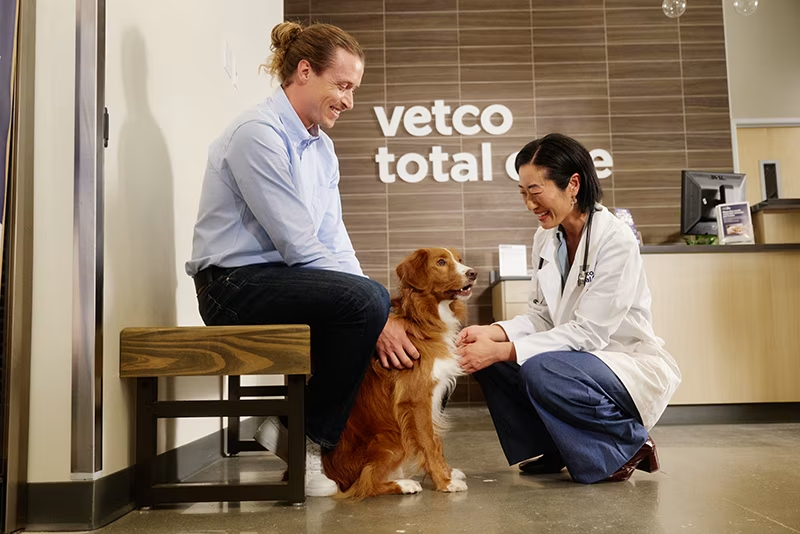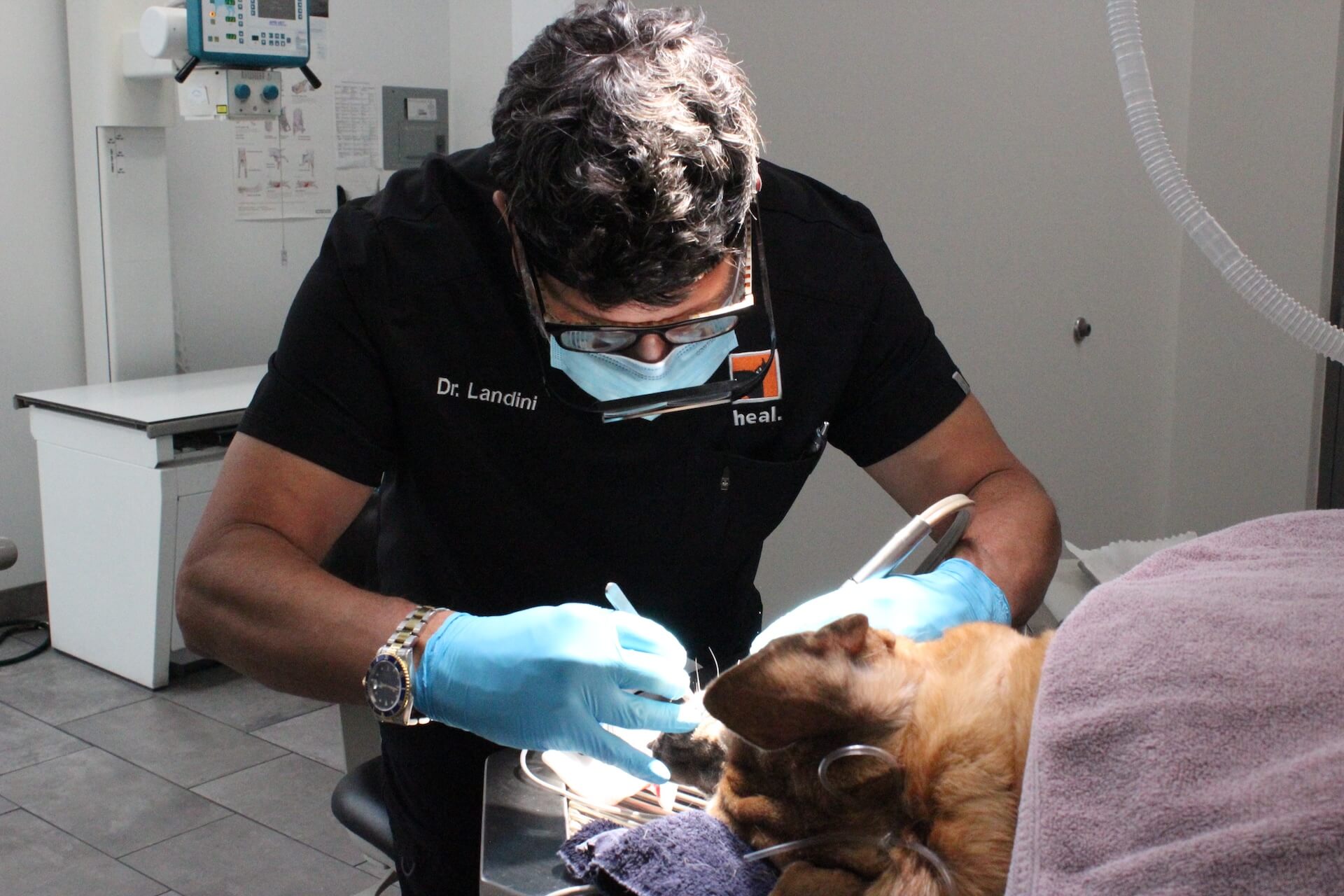Top Mistakes to Avoid Before, During, and After tplo surgery
Top Mistakes to Avoid Before, During, and After tplo surgery
Blog Article
All About Veterinarian Surgical Procedure: Comprehending the Value of Expert Care for Your Pets
Veterinary surgical treatment is a crucial element of animal healthcare. It incorporates numerous treatments, from regular elective surgeries to urgent treatments. Understanding the intricacies of these surgical procedures can assist pet dog proprietors make notified choices. The preparation, implementation, and healing stages are vital for making sure the health of animals. With appropriate knowledge, proprietors can navigate the complexities of veterinary treatment. What variables should be considered prior to an animal undergoes surgery?
Kinds Of Vet Surgeries
When an animal needs medical treatment, understanding the different sorts of vet surgical treatments can help pet dog proprietors make informed decisions. Veterinary surgical treatments can be extensively categorized into 3 main kinds: elective, urgent, and emergency situation surgical procedures. Elective surgical treatments, such as spaying or neutering, are prepared procedures that are not quickly serious. Immediate surgical treatments, like those for international body removal, need to be executed soon however are not life-threatening in the moment. Emergency situation surgeries, such as those dealing with severe injury or internal blood loss, are critical and require instant attention.Additionally, surgical procedures can differ in complexity, varying from minimally intrusive laparoscopic treatments to much more substantial open surgeries. Each type of surgical procedure carries its own threats and healing processes. Understanding these groups enables pet proprietors to participate in purposeful discussions with veterinarians, leading to much better results for their precious family pets.
Planning for Your Pet dog's Surgical treatment
Getting ready for a pet's surgical procedure includes an extensive list to guarantee all essentials are covered. Efficient communication with the veterinarian is vital for comprehending the treatment and any kind of required pre-operative steps - emergency vet. In addition, having clear post-operative treatment directions will certainly help proprietors supply the most effective assistance for their recuperating animals
Pre-Surgery Checklist Basics
Assuring a smooth surgical experience for a pet needs cautious preparation and interest to detail. A pre-surgery list is important for family pet proprietors to comply with. Initially, confirming the set up surgical procedure day and time is vital. Owners need to additionally validate that their pet has actually not eaten according to the vet's directions, usually for 8-12 hours before surgery. Collecting necessary clinical documents, consisting of inoculation background, is very important for the veterinarian's review. It is also recommended to prepare a comfy area at home for the pet dog's recuperation after surgery. Owners should have a plan for transportation to and from the veterinary clinic, making certain that the family pet is safe and comfy throughout the trip. Adhering to these steps can considerably boost the surgical experience.
Communicating With Your Vet

Reliable communication with the vet is essential for a successful surgical experience for family pets. Owners need to be prepared to discuss their pet's medical background, including any kind of pre-existing problems, drugs, and allergic reactions. This details assists the vet assess risks and tailor the surgical strategy as necessary. Furthermore, family pet proprietors should ask concerns regarding the procedure, anesthetic, and anticipated outcomes to assure they completely recognize the process. Clarifying any type of uncertainties can reduce anxiousness for both the pet dog and the owner. It is additionally important to interact any type of behavior changes or issues observed in the pet dog leading up to the surgical procedure. Ultimately, clear discussion fosters count on and collaboration, guaranteeing that family pets obtain the most effective possible treatment during their surgical journey.
Post-Operative Treatment Directions
After discussing the operation with the vet, pet dog proprietors must concentrate on post-operative treatment directions to facilitate a smooth recuperation for their pet dogs. These instructions usually consist of monitoring the medical site for indications of infection, such as redness or discharge. Family pets might require to be kept one's cool and restricted to stop too much movement that could interfere with healing. Discomfort monitoring is important, so proprietors ought to comply with the veterinarian's support on administering medications. Furthermore, dietary limitations may be suggested to prevent gastrointestinal upset. Normal follow-up appointments are essential to guarantee appropriate recovery and resolve any worries. By adhering to these post-operative treatment guidelines, pet dog owners can considerably add to their animal's recuperation and overall well-being.
The Surgery Explained
The surgery for pet dogs includes important steps that ensure their safety and security and recovery. Pre-surgery preparations are crucial for minimizing dangers, while post-operative care standards play a crucial function in advertising recovery. Recognizing these parts helps family pet owners browse the surgical experience better.
Pre-Surgery Preparations
Before a family pet undertakes surgery, numerous vital prep work must occur to guarantee a risk-free and successful treatment. Initially, a complete vet assessment is important to evaluate the animal's overall health and wellness and determine any possible threats. This might consist of blood tests, imaging, or other diagnostics. The veterinarian will likewise review anesthetic options tailored to the family pet's specific demands. Furthermore, pet owners are commonly advised to hold back food and water for a defined time before surgical treatment to reduce the danger of issues throughout anesthesia. It is very important for owners to provide a complete case history, including any medicines or allergic reactions, making sure the surgical group has all required details. Appropriate communication and adherence to pre-surgery standards can greatly enhance the outcome of the procedure.
Post-Operative Treatment Standards
Correct post-operative treatment is essential for making sure a family pet's healing following surgical procedure. After the procedure, pets should be monitored very closely for any kind of indications of issues, such as too much bleeding, swelling, or unusual actions. It is very important to adhere to the vet's directions concerning medicines, including painkiller and antibiotics. Animals must be maintained in a silent, comfy atmosphere to reduce anxiety and advertise recovery. Restricting activity is essential; short, leashed strolls might be needed, but jumping or running must be avoided. Routine follow-up appointments need to be scheduled to examine the recovery procedure. Additionally, the surgical site must be kept tidy and completely dry, with any kind of signs of infection reported to a vet quickly. Abiding by these guidelines boosts recovery end results.
Anesthesia and Discomfort Administration
Effective anesthetic and discomfort monitoring are crucial parts of vet surgery, making certain that family pets stay comfy and secure throughout the procedure. Veterinarians examine each pet's specific needs, thinking about elements such as age, weight, health and wellness status, and the discover here kind of surgery being performed.Anesthesia procedures commonly include a mix of pre-anesthetic medicines, induction representatives, and inhalant anesthetics, enabling for precise control over the pet's level of consciousness. Monitoring throughout surgery is important; veterinarians continually observe crucial indications to deal with any prospective issues promptly.Pain management strategies may entail opioids, non-steroidal anti-inflammatory medications (NSAIDs), and anesthetics, tailored to the family pet's particular circumstance. This complex strategy helps minimize discomfort and advertises a smoother medical experience. By prioritizing efficient anesthetic and discomfort administration, vet specialists improve the overall well-being of animals going through procedures, ensuring they get the highest criterion of treatment.
Post-Operative Care and Healing
Complying with surgical treatment, the focus shifts to post-operative treatment and recovery, which is vital for ensuring a pet dog's risk-free go back to regular activities. Throughout this period, family pets need a silent, comfy atmosphere to help healing. Proprietors must carefully check their animals for any kind of indicators of discomfort or uncommon behavior.Veterinary standards usually consist of particular guidelines related to drug administration, wound care, and dietary modifications. It is vital to comply with these referrals to minimize complications and advertise recovery. Pets may need to be restricted from energetic tasks, such as running or jumping, during their healing period (tplo surgery).Regular follow-up visits with the veterinarian enable surveillance of the animal's progress and prompt changes to the care plan. Supplying emotional support and friendship can likewise improve a pet's recovery experience, assisting to relieve tension and stress and anxiety. Generally, persistent post-operative care plays a significant function in accomplishing a successful recuperation
Recognizing Difficulties After Surgical Treatment
Just how can animal owners determine problems after surgery? Understanding of particular signs is essential for making sure the health of pets during recovery. Common indicators consist of excessive swelling, redness, or discharge at the surgical site, which might represent infection. Additionally, relentless pain, suggested by yawping or hesitation to move, need to trigger immediate attention. Changes in appetite or water consumption can likewise show complications; a reduction in these actions might signal pain or distress.Moreover, family pet proprietors ought to monitor their pet dogs for any uncommon actions, such as sleepiness or difficulty breathing, as these can be signs of severe problems. Throwing up or looseness of the bowels following surgical procedure may require immediate vet assessment. Recognizing these problems early can considerably affect a pet dog's recuperation procedure, highlighting the importance of watchfulness and punctual interaction with a veterinarian for any kind of concerning signs.
The Role of Vet Experts in Surgical Care
Vet professionals play a crucial role in ensuring the safety and security and success of procedures for pets, particularly following surgical try this web-site procedure when keeping an eye on and care are get more extremely important. These professionals include veterinarians, veterinary specialists, and assistance personnel, every one of whom add specialized skills to the medical process.Before surgery, vets carry out comprehensive evaluations to assess the family pet's health and wellness, making sure that any hidden problems are managed. During the treatment, the surgical group gives anesthetic, preserves clean and sterile atmospheres, and keeps track of vital indications, very important for reducing risks.Post-operative care is similarly substantial; veterinary specialists observe for issues, manage discomfort, and overview owners on recuperation practices. Their know-how allows them to identify early indications of distress or infection, ensuring prompt treatment. Eventually, the collaborative efforts of vet professionals in medical treatment foster a secure atmosphere, advertising the health of family pets throughout the medical journey.

Regularly Asked Concerns
Exactly how Do I Choose the Right Vet Surgeon for My Family pet?
Picking the best veterinary surgeon involves investigating credentials, reviewing testimonials, and examining the facility's setting. It is important to review the cosmetic surgeon's experience with details treatments and their interaction design when making a choice.
What Are Usual Misconceptions Regarding Veterinarian Surgeries?
Common false impressions about veterinarian surgical procedures include ideas that they are constantly high-risk, unnecessary, or for emergencies. Numerous pet dog proprietors take too lightly the advantages of preventative treatments and the ability included in veterinary surgical care.
How Much Will My Animal's Surgical treatment Price?
The cost of a pet dog's surgical procedure can differ significantly based on aspects such as the type of procedure, the veterinarian's experience, and geographic location (24 hour vet bellingham). Normally, costs range from a couple of hundred to several thousand bucks

Can My Animal Eat Before Surgical Treatment?
Before surgical treatment, it is usually recommended that animals abstain from eating for a details duration. This fasting helps in reducing the risk of problems throughout anesthetic. Owners need to consult their veterinarian for precise guidelines customized to their animal's needs.
Suppose My Pet Has Pre-Existing Wellness Conditions?
When a family pet has pre-existing wellness conditions, it's vital for the veterinarian to analyze these aspects before surgery. This assessment warranties suitable precautions are taken, minimizing dangers and maximizing the pet dog's general safety and security throughout the procedure.
Report this page